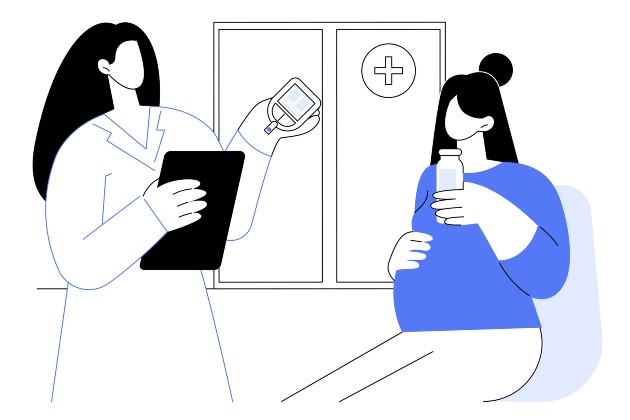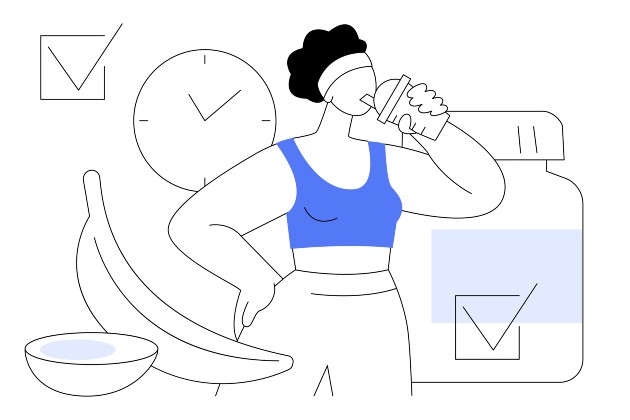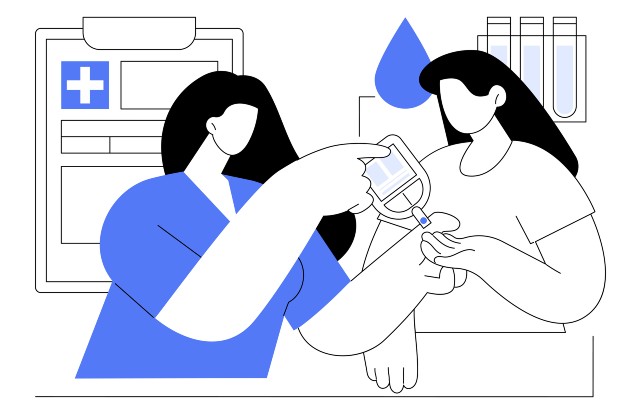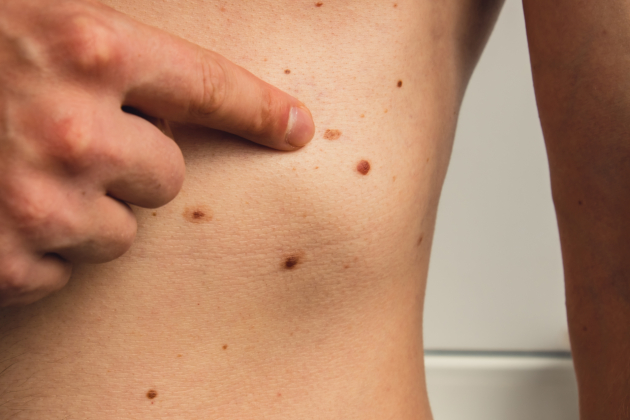“It's probably one of the areas of nursing that's changed most rapidly in the last 10 years,” says Lead Inpatient Diabetes Specialist Nurse Paula Johnston. “The number of patients with diabetes is increasing, but the number of treatments now available, technology particularly, has really skyrocketed. It’s quite exciting now that we’ve got a lot of options, we can individualise care.”
Paula qualified as a nurse in 2001 and spent time on a diabetes and endocrine ward, after working there as a student. A few years later, she was encouraged to apply for a secondment in the diabetes team. “I thought it would be a new challenge. That was 12 years ago and I’m now the lead nurse in our inpatient diabetes team.”
In April 2023, Diabetes UK reported that the number of people living with diabetes in the UK exceeded five million for the first time. Meanwhile, another 2.4 million people are at high risk of developing type 2 diabetes. Nursing staff in all sorts of settings – A&E, maternity wards, care homes, general practice – will encounter patients who have the condition. Already, one in six hospital beds are occupied by a person who has diabetes, so it’s crucial that nursing staff understand the condition.
“Within the next 10 years, that's predicted to be one in three inpatients,” says Paula. “Nowadays, there's no excuse for people in all health care roles not to have an awareness of diabetes. No matter which area you work in, I would suspect you’re going to come across a patient every day who has diabetes.”
Defining diabetes
Diabetes is a long-term condition. People with diabetes experience high levels of glucose in their blood because their body is unable to process glucose properly. This could be because their pancreas doesn’t produce any or enough insulin (insulin deficiency), or because the insulin they’re producing doesn’t work properly (insulin resistance).
There are different types of diabetes:
- In type 1, the person is no longer able to produce any insulin and must inject it for the rest of their life. If a person with type 1 diabetes does not have access to their insulin, this can be a life-threatening emergency.
- Type 2 diabetes is the most common form, and involves insulin deficiency or resistance. It can be managed through a combination of lifestyle changes and regular monitoring, but some patients need oral glucose therapies and/or insulin injections.
- Rarer types of diabetes include gestational diabetes, which develops during pregnancy, and type 3c diabetes, which develops when the pancreas has been damaged.

The main thing staff need to be aware of is the difference between the types of diabetes, says Paula. “Knowing which type of diabetes someone has influences how you're going to manage them, particularly with making sure that people don't miss their insulin doses. That can be catastrophic for someone with type one diabetes, but it may cause someone with type two diabetes to experience high blood glucose levels for a few hours.”
Understanding diabetes medications and when they should be administered is crucial too. “I spend a lot of time speaking with nursing staff where people have had their insulin or medications given late and it’s caused them to go hypoglycaemic. That’s from not understanding the medication and why it needs to be given at that certain time.”
What is hypoglycaemia?
Hypoglycaemia occurs when blood glucose levels is below 4mmol/l. A hypoglycaemia episode can happen quickly therefore it is important to understand the signs and symptoms and treat hypoglycaemia correctly. The most common symptoms are sweating, feeling shaky, being anxious or irritable, feeling disorientated, blurred vision, headache, palpitation and fast pulse rate. Patients can be treated with glucose tablets or gels, or a glucagon injection, especially in more severe cases where the patient has lost consciousness. This should be followed by a slow-release carbohydrate snack.
- Read more about diabetes complications in our resource Diabetes Essentials.
With advances in diabetes care, there are now more medications than ever, so it’s important that nursing staff stay up to date. There have also been huge advances in the technologies that help patients manage their condition. Paula says that nursing staff are most likely to come across insulin pumps and glucose sensors. “Patients that use technology quite often are experts in this,” Paula says. “If someone has an insulin pump, for instance, have a chat with them, because the patient knows how to use it.”
There’s also growing awareness about the impact of language. “People still get referred to as ‘poorly controlled’ or ‘that diabetic patient’,” Paula says. “We’re really trying to stamp that out, and those negative connotations. It’s a long-term condition and we’re trying to encourage staff and patients to be more positive. I would encourage people to read the NHS England Language Matters document.”
Paula says she and her team are now seeing the impact of the pandemic on patients with diabetes or pre-diabetes: “We’re definitely seeing people who may not have seen their health care teams for a number of years now – people haven’t had regular reviews or screening.”

Nursing staff can play a role in spotting diabetes in their patients. “If they’re feeling more thirsty than normal, their clothes are feeling looser, or over the last few months they’ve been getting up to go to the toilet a lot every night, they should go to their GP and get checked out,” Paula advises. “If someone is maybe overweight, sedentary or has a strong family history of diabetes, it’s very important that we mention the increased risk of developing type two diabetes.”
Diabetes facts
- Diabetes affects around 4.7 million people in the UK – one in every 15 people.
- An estimated one million people are unaware that they have diabetes.
- Around one in six hospital beds are occupied by a person living with diabetes.
- Around 90% of people with diabetes have type 2 diabetes, 8% have type 1 diabetes and 2% have rarer types of diabetes.
Find out more in the RCN resource Diabetes Essentials.
The RCN Diabetes Forum brings together diabetes specialists from many different settings: inpatient, community, care homes, research. Paula is a member of the forum committee and helped create Diabetes Essentials, a resource for all nursing staff who want to learn more about the long-term condition. “The aim was to bring together important information that we feel all health care professionals should be aware of. We created it for the non-specialists, the people who are going to be encountering patients with diabetes on a day-to-day basis – practice nurses, district nurses, community nurses – but diabetes is not their sole job.”
The resource contains information about the different types of diabetes, medications, insulin regimes and more. “If people have a bit more understanding of what their patients are taking, they’ll be able to help them work out if things need adjusting,” Paula says. “And there’s information about diet and lifestyle that they can pass on to their patients as part of their consultations.”
Becoming a diabetes specialist has allowed Paula to work with patients of all ages and in many different settings. “It touches all different areas of nursing,” Paula says. “In the past, diabetes was a life-limiting condition. That's no longer the case.”
Read more
- Diabetes Essentials is available on RCN Learn now.
- Join the RCN Diabetes Forum here.








